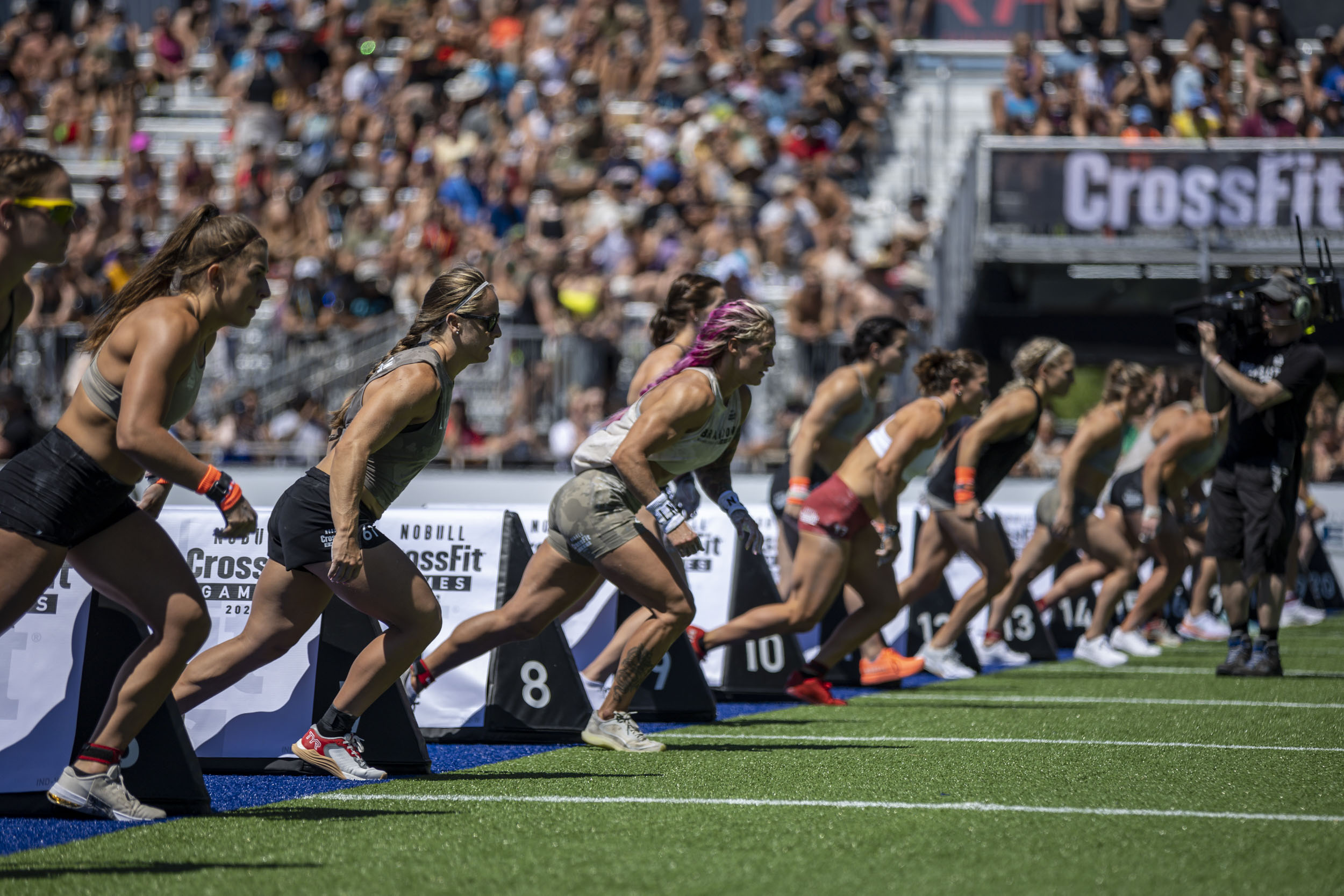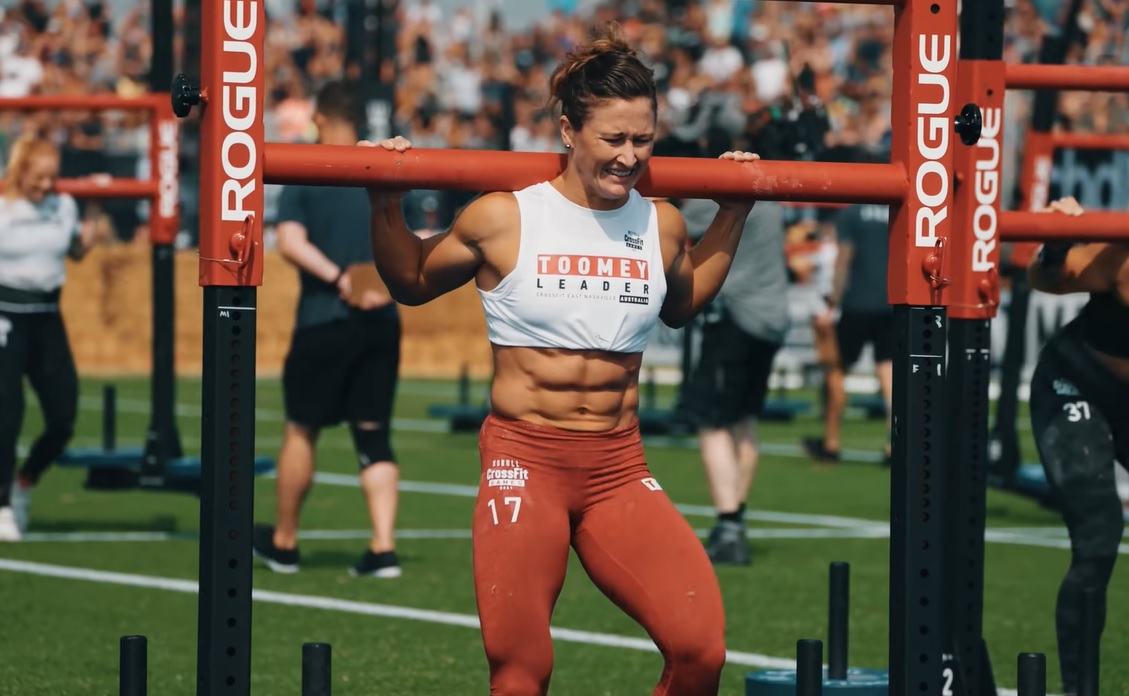The “Death” Events

The CrossFit Games is known for its grueling workouts and challenging events, but some events have earned the reputation of being “death” events. These events push athletes to their absolute limits, both physically and mentally, testing their resilience and pushing them beyond their perceived boundaries.
The Most Notorious “Death” Events
These events have become legendary for their extreme difficulty and the toll they take on athletes. They are often characterized by high-intensity movements, long durations, and a combination of physical and mental challenges.
- Murph: This iconic workout, named after Navy SEAL Lieutenant Michael Murphy, involves a 1-mile run, 100 pull-ups, 200 push-ups, 300 squats, and another 1-mile run, all while wearing a 20-pound weighted vest. It is a grueling test of endurance and strength, often pushing athletes to their absolute limits.
- The “Fran”: This workout is known for its short but intense duration. It consists of 21-15-9 repetitions of thrusters (95 pounds for men, 65 pounds for women) and pull-ups. The fast pace and high repetitions make it a true test of power and strength.
- “Grace”: This workout, like “Fran,” is a short but brutal test of strength and power. It involves 30 clean and jerks (135 pounds for men, 95 pounds for women) as quickly as possible. The high weight and rapid repetitions make it a demanding test of explosive power and strength.
- “Diane”: This workout is a combination of heavy lifting and high-intensity movements. It consists of 21-15-9 repetitions of deadlifts (225 pounds for men, 155 pounds for women) and handstand push-ups. The combination of heavy lifting and demanding gymnastics movements makes it a challenging test of overall strength and fitness.
- “Helen”: This workout is a test of speed and power. It involves three rounds of a 400-meter run, 21 kettlebell swings (53 pounds for men, 35 pounds for women), and 12 pull-ups. The short rest periods and demanding movements make it a true test of speed and endurance.
The Impact of “Death” Events on Athlete Performance and Safety: Crossfit Games Death

“Death” events in CrossFit, characterized by their grueling nature and high-intensity demands, have become a staple of the sport, captivating audiences and pushing athletes to their limits. These events, often involving a combination of challenging movements performed in rapid succession, are designed to test an athlete’s physical and mental fortitude. While these events undoubtedly contribute to the sport’s unique appeal, it is crucial to analyze their potential impact on athlete performance and safety.
The Risks Associated with “Death” Events, Crossfit games death
The high-intensity nature of “Death” events can pose significant risks to athletes, particularly if proper safety protocols are not in place. These risks include:
- Increased risk of injury: The combination of high-intensity movements, rapid transitions, and fatigue can increase the likelihood of injuries, such as muscle strains, ligament tears, and even more serious conditions like rhabdomyolysis.
- Overexertion and exhaustion: The relentless nature of “Death” events can lead to overexertion and exhaustion, potentially pushing athletes beyond their physiological limits, increasing the risk of injuries and compromising their overall well-being.
- Dehydration and electrolyte imbalance: The high sweat rates associated with these events can lead to dehydration and electrolyte imbalances, potentially causing dizziness, muscle cramps, and even heat stroke.
- Mental fatigue and burnout: The mental strain of “Death” events, coupled with the physical demands, can lead to mental fatigue and burnout, impacting an athlete’s decision-making abilities and overall performance.
The Benefits of “Death” Events
Despite the risks, “Death” events can also offer significant benefits to athletes:
- Enhanced fitness and strength: These events demand a high level of fitness, pushing athletes to develop strength, endurance, and power, leading to significant improvements in overall physical capabilities.
- Mental toughness and resilience: The grueling nature of “Death” events challenges athletes mentally, fostering resilience, determination, and the ability to overcome adversity.
- Improved work capacity and efficiency: The demanding nature of these events helps athletes improve their work capacity and efficiency, enabling them to perform at a higher level for longer durations.
- Increased athleticism and adaptability: “Death” events require athletes to adapt to various movements and conditions, promoting overall athleticism and adaptability, essential qualities for any athlete.
The Role of Coaching and Athlete Preparation
Coaching and athlete preparation play a crucial role in mitigating the risks associated with “Death” events. Effective coaching involves:
- Proper training and conditioning: Coaches must ensure athletes are adequately prepared for the demands of “Death” events through comprehensive training programs that focus on strength, endurance, and movement proficiency.
- Risk assessment and mitigation: Coaches should conduct thorough risk assessments, identifying potential hazards and implementing strategies to minimize the risk of injuries.
- Proper nutrition and hydration: Coaches must emphasize the importance of proper nutrition and hydration before, during, and after “Death” events to prevent dehydration, electrolyte imbalances, and fatigue.
- Mental preparation and stress management: Coaches should guide athletes in developing mental resilience and stress management techniques to handle the mental and physical challenges of “Death” events.
Safety Protocols in CrossFit Compared to Other Sports
CrossFit has implemented specific safety protocols for “Death” events, drawing from best practices in other sports.
- Medical personnel: Like other high-intensity sports, CrossFit events typically have medical personnel on site to provide immediate care in case of injuries.
- Warm-up and cool-down: CrossFit encourages athletes to engage in proper warm-up and cool-down routines before and after “Death” events to minimize the risk of injuries.
- Movement proficiency: CrossFit emphasizes proper movement technique and form, ensuring athletes perform exercises safely and effectively.
- Athlete monitoring: Coaches and judges monitor athletes closely during “Death” events, looking for signs of fatigue, distress, or potential injuries.
Crossfit games death – The CrossFit Games, with their grueling challenges, showcase the pinnacle of fitness. While the intensity can be daunting, the spirit of community and support thrives. At Dukic CrossFit , this spirit is embodied in their welcoming atmosphere and dedication to helping individuals reach their full potential.
This same spirit of perseverance and camaraderie fuels the CrossFit Games, where athletes push their limits and inspire others to strive for greatness.
The CrossFit Games are a testament to human endurance and strength, pushing athletes to their absolute limits. While the competition is fierce, the spirit of camaraderie and support shines through, just as it does in Lazar Dukic’s video , which explores the power of community and dedication.
The Games are a reminder that even in the face of adversity, the human spirit can rise to meet any challenge, inspiring us to push our own boundaries and achieve the seemingly impossible.